'The Death of Nelson' by Daniel Maclise
© 2007
Armchair Travel Co. Ltd. - This page may be used for non-commercial purposes
ONLY!
![]()
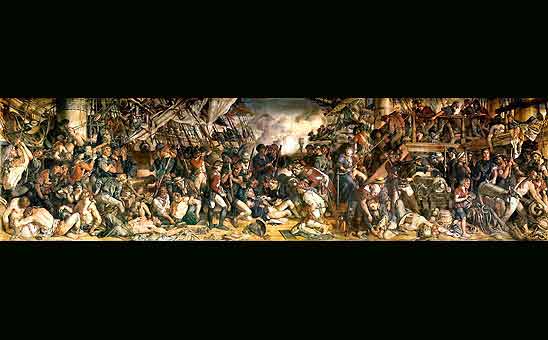
[ Play
Narrated and Animated Movie ! ] This enormous wall-painting shows Admiral Nelson, mortally wounded in the hour of victory at the Battle of Trafalgar in 1805. It was painted by Daniel Maclise between 1863 and 1865. This and The Meeting of Wellington and Blücher, which faces it across the Gallery, are Maclise's masterpieces.
The painting shows the Victory locked in combat with the French ship the Redoutable. In the centre, Nelson lies dying, his head lying against the chest of Captain Hardy. To his right, Doctor Beattie leans forward urgently to address him, and behind him crouches Lieutenant Ram: but Nelson's gaze is not on them: his eyes look upwards, with an expression of mingled suffering and fortitude. In reality, though Nelson was struck on deck, he was quickly carried below decks, and it's there that he died.
Standing in the throng behind Nelson we see a black sailor, with arm raised aloft, pointing out of the picture to the rigging of the Redoutable, from which the fatal shot was fired. He is helping the aim of a marine, who raises his musket against the lucky sniper.
But the marine did not succeed in downing Nelson's killer. That fell to one of a pair of young midshipmen who were stationed on the poop deck. The middie in question was named Pollard. He was still alive in the 1860s, as a pensioner at Greenwich in very reduced circumstances, and he was one of the very many authorities consulted by Maclise.
Everywhere there are telling human pictures: an indomitable powder monkey, as the young boys were called who dodged their way through the carnage and chaos, is bringing gunpowder to keep the cannons roaring. To the left of him, two sailors assist the young Lieutenant Westphal, who is badly wounded and fainting in their arms. Behind them, two sailors carry buckets of water up the companionway, to put out the fire on the Redoutable, and stop it from spreading to the Victory, which is close alongside.
On the opposite, left-hand side of the painting, a group of sailors, one of them a grey-headed older man, are carrying away for treatment a severely-wounded shipmate. To the left of this group two women attend a bleeding seaman: one holds a bowl of water, while the other sponges blood from his brow. The ship's cook - another black man - offers brandy.
All this astonishing detail was painted in just eighteen months.
This vast, monumental depiction is entirely in the dress of the day, but in its inspiration and in its influences it looks directly back to Renaissance and Baroque paintings and sculptures, so that Nelson's death seems less like a heroic celebration than a scene of martyrdom. The mood is essentially tragic, that of a ritual sacrifice.
Maclise submitted a sketch of this fresco to the Fine Arts Commission in 1861. Albert, the Prince Consort, died the same year, and the Commission suffered a loss of momentum by his death. It was not until 1863 that Maclise was given the go-ahead.
The commission gave great grief to the painter. The death of the Prince Consort had robbed the scheme of decoration of its chief promoter. By 1864, the programme was wound up, and henceforth the decoration of the Palace proceeded by piecemeal commissions. As Maclise finished this enormous project, he found that it was associated by many with the failure of the scheme as a whole. The artist was described as being 'worn out with intense application', and 'looking like an old, old man'. To a visitor he spoke gloomily: 'Nobody cares for the pictures after they are done, or wants them, as far as I can see.'
Already the colours were fading from this and the Wellington painting. In 1869, a few months before Maclise's death, J.B. Philip's statues of Kings and Queens here were gilded, and the contrast was embarrassing. The Art Journal wrote: 'We look forward eagerly to the removal of these unfortunate frescoes which year by year blacken on the wall'.
But modern critics regard the paintings much more positively, praising their serious and sombre realism and their expressive power.
[ Virtual
Tour ] [ Main Topics
Index ]
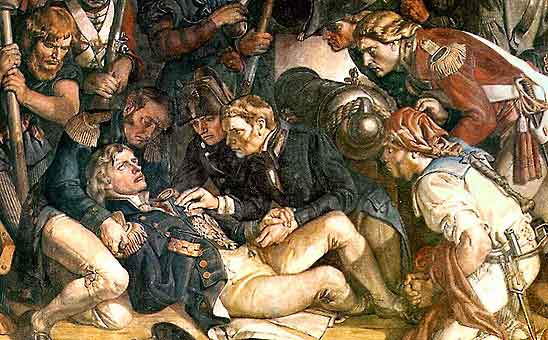
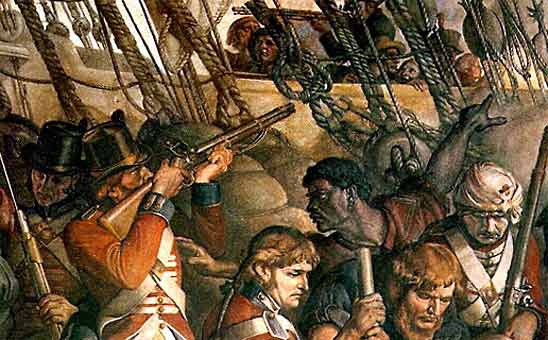
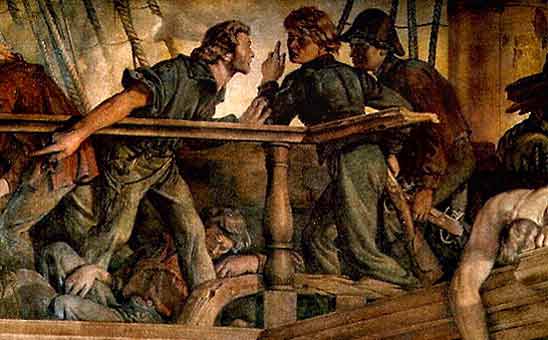
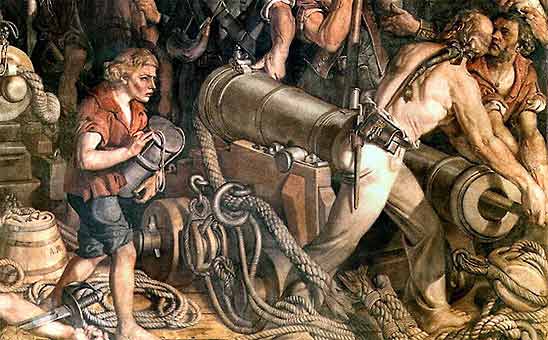
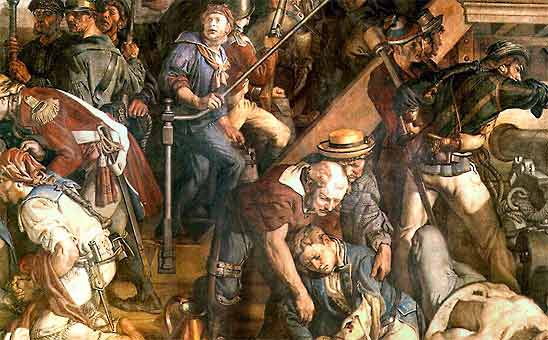
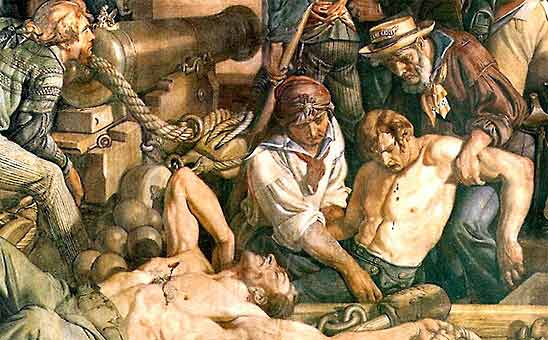
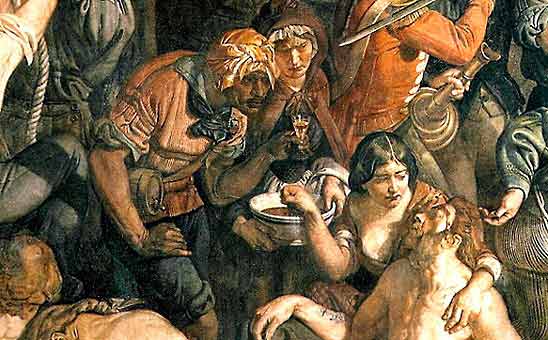
Additional Information on
'The Death of Nelson' by Daniel Maclise
Explore-Parliament.net: Advanced Category Search
Keyword Categories:
_Object_Painting
_Object_Artwork
_Man
_Person
_Event_Historical
_Setting_Battle
_Setting_Trafalgar
_Setting_Sea
_Artist_Maclise
_Nelson